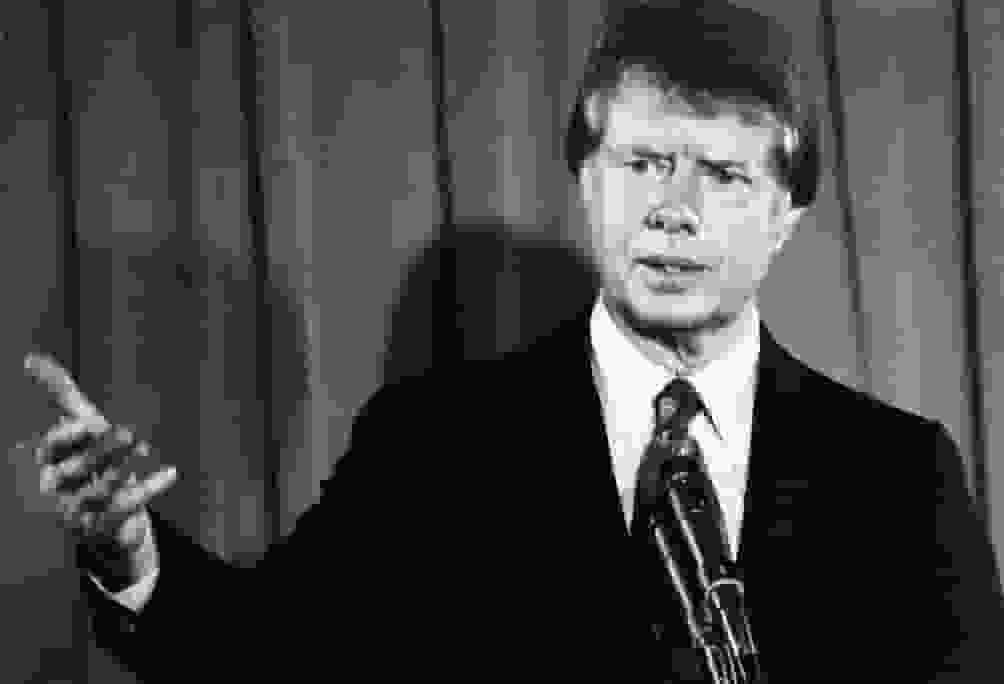Ben Barnes recalls vividly how Jimmy Carter was defeated, despite the passage of more than four decades. His longstanding political mentor sent him to the Middle East on a mission.
Barnes said that he did not know the mission’s true objective until much later: to damage the re-election campaign of the president of the United States. Jimmy Carter was in the White House in 1980, when a hostage crisis in Iran halted his presidency and hindered his efforts to win a second term.
Prior to Election Day, Carter’s greatest chance of winning was to release the 52 Americans kept imprisoned. According to Mr. Barnes, his instructor was determined to avoid this. John B. Connally Jr., a former Texas governor who had served under three presidents and had just lost his own quest for the White House, was his mentor.
Former Democrat John Connally sought the Republican candidacy in 1980 but was defeated by former California Governor Ronald Reagan. Barnes stated that Connally was now determined to assist Reagan to defeat Carter and, in the process, make his own case to become secretary of state or defense in a new government.
For over 43 years, Barnes has mainly concealed the subsequent events. Connally, he recalled, brought him to many Middle Eastern capitals that summer to give a straightforward warning to Iran: Do not release the captives until after the election. Reagan will triumph and negotiate a better deal for you.
Shortly after coming home, Connally briefed William J. Casey, the campaign chairman for Ronald Reagan and eventually head of the Central Intelligence Agency, in an airport lounge, according to Barnes.
READ ALSO: Vice President Kamala Harris Plan to Ban Almost All Abortion Proposals
Behind Jimmy Carter’s Defeat

Carter’s camp has long assumed that Casey or another member of Reagan’s inner circle attempted to sabotage efforts to free the hostages before the election, and entire books have been written on the “October surprise.” However, congressional inquiries disproved earlier explanations.
Connally was absent from these investigations. His participation, as described by Mr. Barnes, gives additional insight into what may have transpired during that tense, important election year. Carter is currently 98 years old and receiving hospice care, so Barnes felt obligated to amend the record.
Barnes is not a nefarious foreign armaments dealer with a dubious reputation, like some of the figures who supported earlier versions of the October surprise idea. The youngest speaker of the Texas House of Representatives and subsequently lieutenant governor, he was once one of the most recognized individuals in Texas.
He was such an important character that he helped George W. Bush avoid being drafted and sent to Vietnam by enrolling him in the Texas Air National Guard. President Johnson prophesied that Barnes would one day become president.
After so long time, confirming Barnes’s statement is tough. Connally, Casey, and other key players have passed away, and Barnes does not have any journals or memoranda to support his narrative.
Yet, he has no evident motive to fabricate the narrative and has indicated apprehension about going public due to the response of fellow Democrats. The Lyndon Baines Johnson Library and Museum’s records corroborate a portion of Barnes’s narrative.
An itinerary discovered in Connally’s archives this week revealed that he left Houston on July 18, 1980, for a tour that would take him to Jordan, Syria, Lebanon, Saudi Arabia, Egypt, and Israel before he returned on August 11. Barnes is identified as his companion.
Short press articles at the time provided minimal information on Connally’s trips, calling the trip as “strictly private.” An unusual item in Connally’s file verifies Barnes’s recollection of early interaction with the Reagan camp. Under the title “Governor Reagan,” an assistant reported on July 21 to Connally: “Nancy Reagan phoned – they are at the Ranch, and he wants to speak with you about strategy discussions.”
No record of his reaction existed. Barnes recounted attending Connally in early September for a three-hour meeting in the American Airlines lounge at what was then known as Dallas/Fort Worth Regional Airport to report on their trip.
A date on Connally’s calendar discovered this week indicated that he flew to Dallas on September 10. Casey’s archives at Stanford University’s Hoover Institution had no documentation showing whether he was in Dallas at the time.
Barnes was confident that the purpose of Mr. Connally’s trip was to convince the Iranians to hold the captives until after the election. “I will die feeling that was the goal of the journey,” he stated.
“It wasn’t freelance work because Casey was so interested in hearing as soon as we returned to the United States,” he said, adding that Casey wanted to know if “they were going to hold the captives.”
Barnes cannot assert that Casey instructed Connally to take the trip because none of the evidence demonstrates that Mr. Reagan was aware of the trip. Similarly, he does not know if the message sent to numerous Middle Eastern officials reached the Iranians or if it affected their decision-making.
However, Iran held the hostages until after the election, which Reagan won, and did not free them until Carter departed office on January 20, 1981, at about noon.
READ ALSO: Oprah Winfrey Fires Back at Trump’s New Book That Mentions Her Letter to Former President



